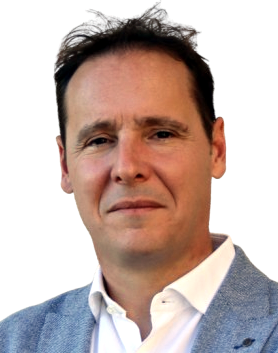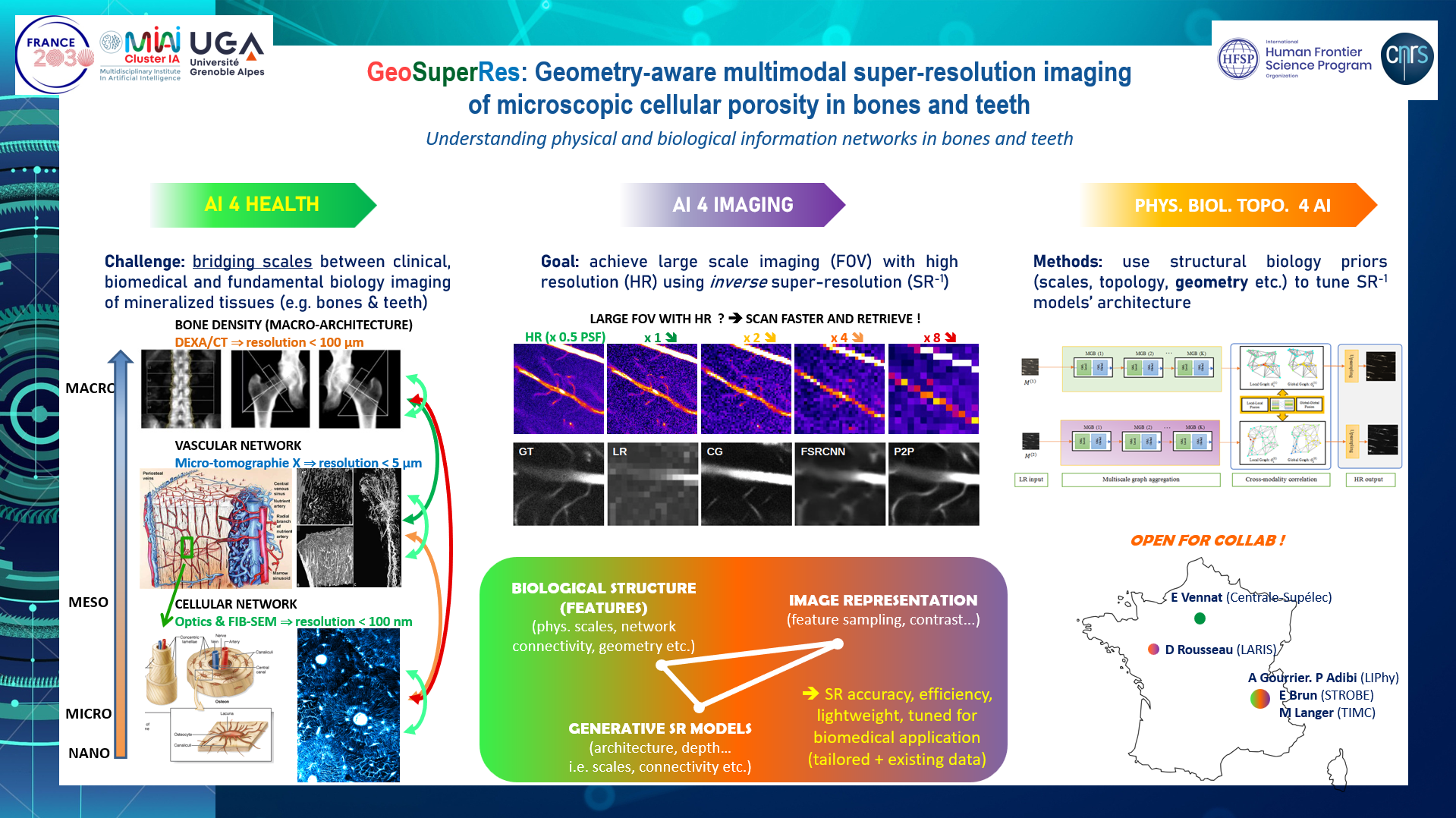 Aurélien Gourrier,
Aurélien Gourrier,
CNRS Research Director,
aurelien.gourrier@cnrs.fr
DESCRIPTION
This MIAI Chair aims to address a fundamental dilemma for biomedical imaging: choosing between visualizing fine microscopic details of a small biopsy or obtaining a very coarse view of the whole organ. Both options generally require different instruments which need to be combined to fully elucidate the structure. Such correlative imaging generally comes at great operational and infrastructure costs.
Deep learning super-resolution (SR) can help achieve this goal by combining modalities with different resolving power. Many SR models have been proposed which generalizability is far from obvious. We believe that substantial improvements could be made by including structural biology information into the models. Our target application is the analysis of microscopic cell networks in bones and teeth, which diseases are a major burden for public health systems. Such systems exhibit specific network topology and geometry characteristics that will help design more efficient and lighter SR models that could be applied to broader classes of physical networks.
The chair builds upon a strongly interdisciplinary team with extensive expertise in bioimaging, medical analysis and AI for computer vision, with extensive experience in industrial transfer.
Please don’t hesitate to share interests and reach out to us at any time !
ACTIVITIES
We are very happy to announce that Prof. Peyman Adibi from Isfahan University has now joined the team until at least 2027 ! His very broad expertise in computer vision related AI problems will be a strong asset for developing SR.
A PhD position will be opened in June 2026 and a junior postdoc position will be also be announced in 2026, so stay in touch !
EVENTS
The first chair events will be announced during the Fall of 2025.
MORE ABOUT CORE AND ASSOCIATED MEMBERS :
Core Members:
Aurélien Gourrier is heading the chair. He is a CNRS Research Director at the Laboratory for Interdisciplinary Physics (LIPhy), a mixed unit of the CNRS and University Grenoble Alpes. He has a broad expertise in imaging methods and instrumentation, biophysics and biomedical studies of mineralized tissue.
Emmanuel Brun, is an INSERM Research director at the Laboratory of Synchrotron Radiation for Biomedicine (STROBE), a mixed INSERM unit with the University Grenoble Alpes. He is an X-ray medical imaging expert with a broad interest in image physics and translational research.
Max Langer is a CNRS Research Fellow based at the Translational Research and Innovation in Medecine and Complexity (TIMC) Laboratory of the CNRS and University Grenoble Alpes. He is a physicist and specialist of image reconstruction and inverse problem, including with AI methods, with strong expertise in synchrotron X-ray phase contrast methods.
Elsa Vennat is Professor at Centrale-Supelec and is based at the Laboratory of Mechanics of Paris-Saclay (LMPS), a joint unit of the University of Paris-Saclay, ENS Paris-Saclay, CentraleSupélec and CNRS. She is an expert in numerical mechanics modeling of materials and biomaterials, in biomechanics, and biomedical studies of teeth in particular.
David Rousseau is Professor at the University of Angers and is leading research at the Angers Regional Laboratory for Research in Systems Engineering (LARIS). He is a computer vision and AI expert with widespread expertise in imaging systems, including unconventional imaging.
Associated members :
Peyman Adibi is a Professor from Isfahan University currently hosted at the LIPhy. He is a well-known expert in AI for computer vision applications with a broad interest in topology informed machine-learning.
CHAIR PRESENTATION

License:
Unless otherwise stated, all documents are shared under the Creative Commons BY-NC-ND 4.0 license.
You may view and share them for non-commercial purposes, without modification, and with appropriate credit to the authors.

 Aurélien Gourrier,
Aurélien Gourrier, 

